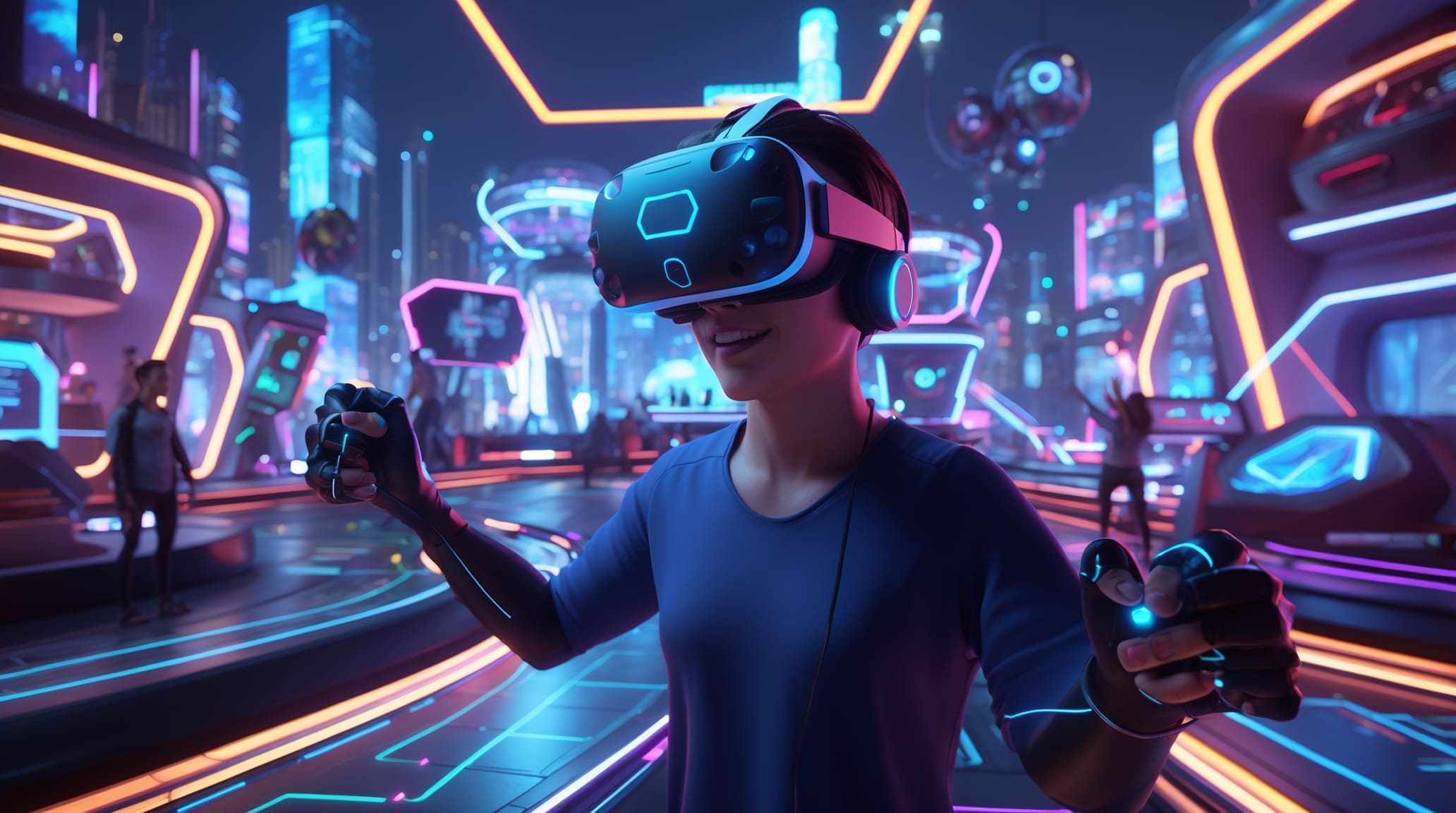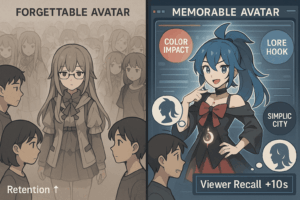Virtual Reality (VR) is redefining the gaming industry, creating interactive experiences that transport players into new worlds. At the heart of this transformation are 3D game design, game engines, and detailed environments, which work together to build lifelike settings and seamless gameplay. With advancements in game development, VR gaming has become more than just a trend—it is shaping the future of entertainment.
This blog explores the essential components of immersive VR experiences, highlighting how 3D game design, game engines, and detailed environments contribute to the evolution of video games.
The Role of 3D Game Design in Virtual Reality
3D game design is the foundation of every virtual reality experience. From character models to expansive landscapes, 3D assets create the interactive and visual appeal of a game. In VR, these elements go beyond traditional video games, as players are no longer spectators—they are inside the game world.
Key Elements of 3D Game Design:
Modeling: 3D modeling involves creating digital representations of characters, objects, and environments. High-quality models enhance realism but require optimization to ensure smooth performance in VR.
Textures & Materials: Textures define how surfaces appear, adding depth and realism. Materials such as metal, wood, and glass should look and behave authentically under different lighting conditions.
Lighting & Shadows: Lighting plays a crucial role in setting the mood and guiding players. Real-time lighting and shadows enhance immersion, making environments feel lifelike.
Animation & Motion: Character animations, physics-based movements, and environmental interactions bring the game world to life. Smooth transitions and realistic motion improve engagement.
Polygon Optimization: Higher polygon counts improve visual quality but can slow down performance. VR developers balance this by optimizing assets while maintaining realism.
As 3D game development advances, new tools and technologies make it easier to create ultra-realistic assets, enhancing player engagement and making VR worlds feel more immersive than ever.
Game Engines: The Power Behind Virtual Reality Gaming
A game engine is the core software that powers VR experiences, handling everything from rendering graphics to simulating physics and interactions. Without robust game engines, modern VR games wouldn’t be possible.
Why Game Engines Are Crucial for VR Game Design?
Game engines are the backbone of VR game development, providing real-time rendering, optimization, and interactivity. These engines ensure that VR games perform smoothly while offering an immersive experience across multiple platforms.
Rendering: Game engines render 3D environments and objects in real-time, ensuring that VR players experience smooth, immersive worlds. With the right rendering techniques, game engines can simulate realistic lighting, shadows, and materials to enhance visual fidelity.
Optimization: VR games require high levels of optimization to maintain performance and minimize load times. Game engines like Unity support procedural methods for optimizing assets, allowing developers to ensure that the final product runs smoothly on various platforms without compromising visual quality.
Interactivity: A key feature of VR is the ability to interact with the environment. Game engines handle the physics and mechanics that govern these interactions, enabling players to move through environments, manipulate objects, and naturally engage with the world.
Cross-Platform Support: Game engines like Unity provide cross-platform compatibility, meaning that developers can create a game that works on multiple VR platforms, from PC-based systems to mobile VR headsets, ensuring that the game reaches a wide audience.
Third-Party Software Integration: Game engines support integration with various third-party tools and assets, including animation software, sound libraries, and other resources that enhance the game’s overall quality.
Creating Detailed Environments for VR
One of the key challenges in VR game development is creating detailed environments that can fully immerse players in the game world. Unlike traditional video games, where players interact with the environment on a 2D screen, VR gaming places players directly within the environment, requiring much more attention to detail and realism.
Detailed environments are essential for creating a compelling VR experience. Players need scenes to feel as though they are truly part of the world, with objects, characters, and surroundings that respond realistically to their actions.
The Art of Creating Detailed Environments in VR
A well-crafted game world is essential for player immersion. In VR, where players are physically present in the environment, details matter more than ever. Detailed environments bridge the gap between reality and simulation, making the virtual world feel authentic.
Essential Elements of Detailed VR Environments:
Texture Mapping: High-resolution textures enhance realism by replicating real-world surfaces, from brick walls to reflective water surfaces. Advanced shaders and PBR (Physically Based Rendering) techniques further improve the depth and material accuracy.
Lighting Effects: Dynamic lighting and realistic shadows create depth, atmosphere, and realism, making environments visually stunning. Ray tracing and global illumination add lifelike reflections and soft, natural-looking light interactions.
Sound Design: 3D spatial audio enhances immersion by providing directional sound effects, helping players locate objects and navigate the world. Adaptive soundscapes react to player movement, enhancing realism and emotional engagement.
Scale & Proportion: Proper scaling ensures objects and characters appear natural. A misaligned scale can break immersion, making the environment feel artificial. Accurate proportions help maintain consistency, ensuring characters don’t feel too large or too small within a scene.
Interactive Objects: Players should be able to interact with their surroundings—picking up objects, pushing doors, and affecting the environment dynamically. Physics-based interactions, like destructible environments and fluid simulations, add realism and engagement.
Procedural World Generation: Some games use AI-driven world-building techniques, creating large, realistic landscapes with minimal manual work. Algorithms ensure variation in terrain, structures, and ecosystems, making each playthrough unique.
Creating detailed environments requires a balance between aesthetics and performance. VR games demand high frame rates for smooth gameplay, so developers must optimize textures and models while maintaining realism.
The Impact of 3D Game Design on Modern Video Games
Video games have come a long way from their humble beginnings, with 3D game design playing a pivotal role in their evolution. Today, video games are not just about entertainment—they’re an immersive experience that combines storytelling, interactivity, and stunning visuals to captivate players.
How 3D Game Design Transforms Video Games?
Immersive Gameplay: With detailed environments and realistic models, players can interact with virtual worlds in a way that feels organic. This enhances the gameplay mechanics, making it more engaging and realistic. The use of animated characters adds depth to these interactions, making every movement and response feel natural.
Visual Fidelity: High-quality 3D models and textures elevate the visuals, providing a photorealistic experience that draws players into the game world. The visual fidelity of a game determines how authentic the experience feels, especially in VR. By focusing on intricate details, developers can create games with a level of realism that pulls players deeper into the experience.
Complex Storytelling: Advanced game engines and 3D modeling allow for more detailed characters and worlds, giving developers the ability to tell complex stories with rich visuals that resonate with players. The inclusion of well-designed animated characters allows for storytelling through motion, breathing life into each narrative.
Optimized Performance: The advancement of game engines means that video games can now run smoothly with intricate designs and detailed environments, even on devices with limited resources. Programming languages are essential in optimizing these games for better performance, enhancing efficiency by ensuring smooth load times and gameplay. Using procedural methods also helps developers add depth to game worlds while maintaining a steady frame rate.
Other Assets: From textures to sound effects, other assets like animations, lighting, and physics are all crucial to the overall quality of the game. By integrating these elements efficiently, developers ensure that the game’s performance is consistent while maintaining high levels of quality.

The Evolution of VR and the Future of 3D Game Design
VR gaming is advancing rapidly, with 3D game development evolving alongside it through cutting-edge tools and technologies. From AI-driven character behaviors to real-time ray tracing, the industry is pushing the limits of realism and interactivity. The future promises even more immersive experiences, transforming how players engage with virtual worlds.
One major trend is AI-powered NPCs, creating smarter, more responsive characters that react dynamically to player actions. Advanced haptic feedback is also on the rise, offering lifelike tactile sensations that deepen immersion. Cloud-based VR gaming aims to eliminate hardware limitations, making high-quality VR accessible to more players. Meanwhile, real-time ray tracing enhances lighting and reflections, bringing environments to life with stunning realism. Lastly, AR/VR integration is blending augmented reality with virtual worlds, unlocking new possibilities for mixed-reality gameplay.
As game engines evolve and 3D design tools become more sophisticated, developers will continue to redefine VR gaming. With innovation driving the industry forward, the future holds endless opportunities for creating more immersive, interactive, and visually stunning virtual experiences.
Bringing It All Together with 3DAiLY
At 3DAiLY, we specialize in cutting-edge 3D game design, helping brands and developers bring their VR visions to life. Our proprietary technology and in-house 3D artists ensure that your video game assets are created 30x faster and cheaper than traditional methods. Ready to build immersive VR worlds? Let 3DAiLY take your game design to the next level! Get in touch with us today!



